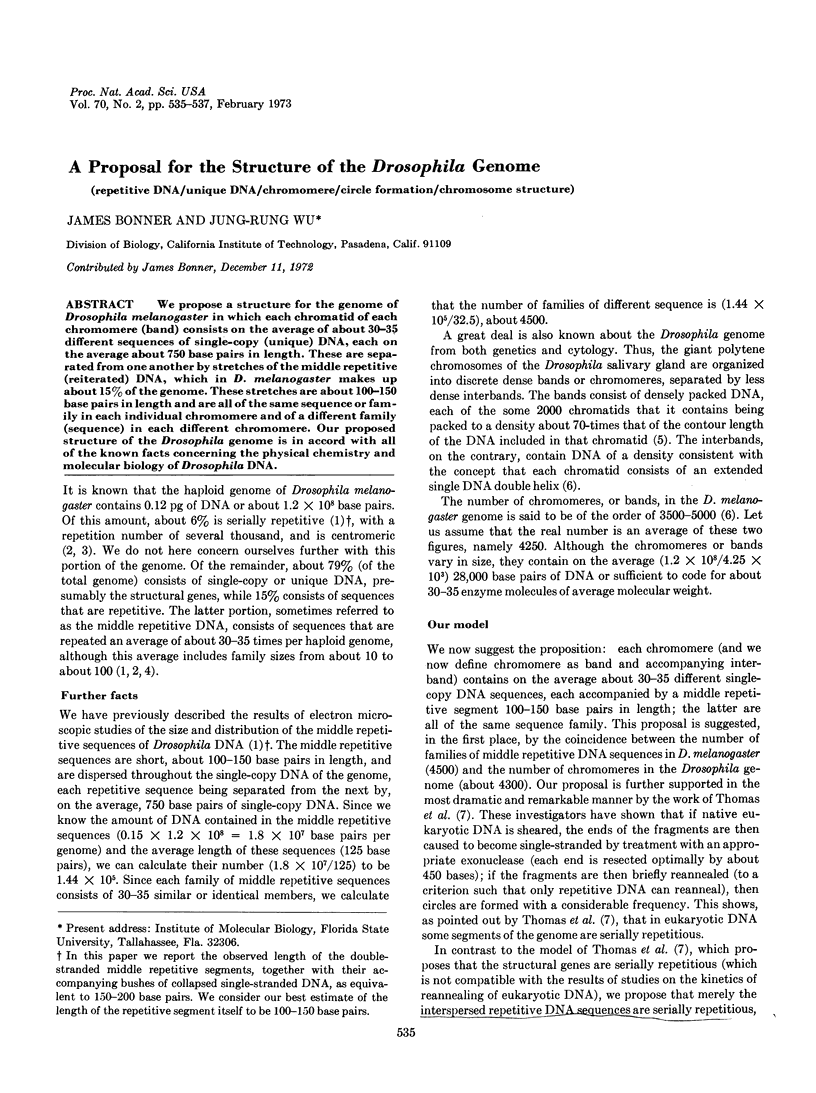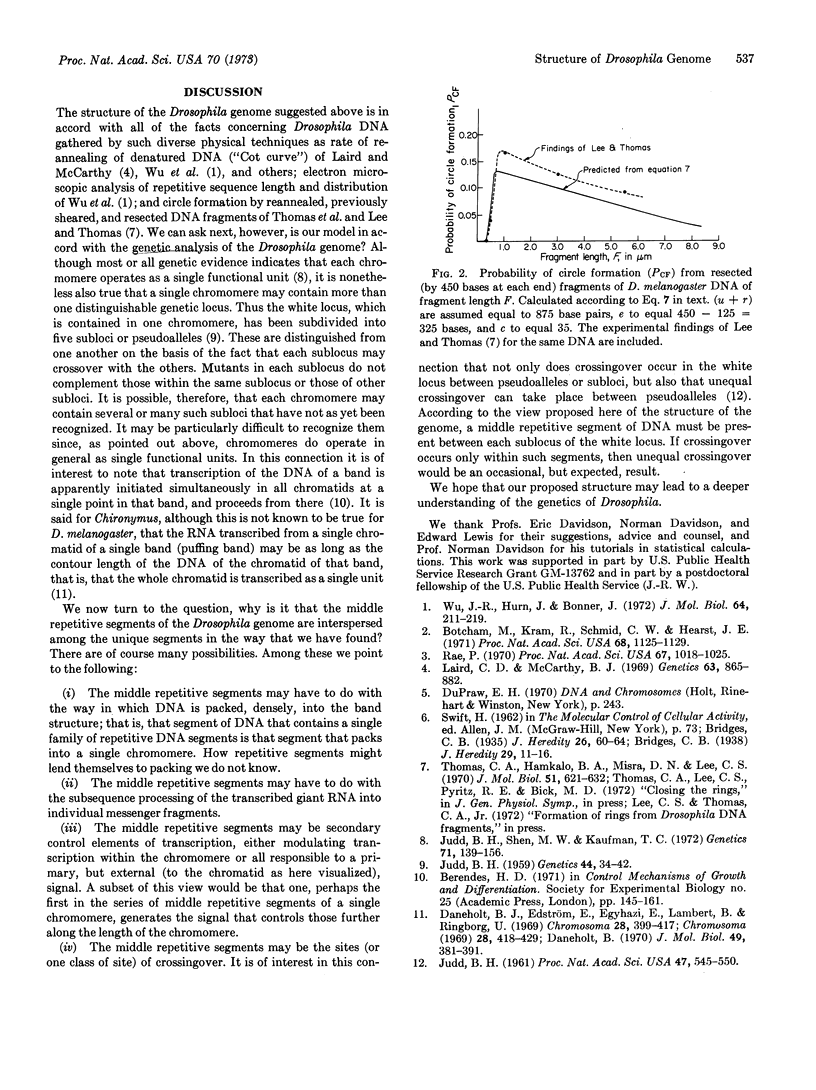Abstract
We propose a structure for the genome of Drosophila melanogaster in which each chromatid of each chromomere (band) consists on the average of about 30-35 different sequences of single-copy (unique) DNA, each on the average about 750 base pairs in length. These are separated from one another by stretches of the middle repetitive (reiterated) DNA, which in D. melanogaster makes up about 15% of the genome. These stretches are about 100-150 base pairs in length and are all of the same sequence or family in each individual chromomere and of a different family (sequence) in each different chromomere. Our proposed structure of the Drosophila genome is in accord with all of the known facts concerning the physical chemistry and molecular biology of Drosophila DNA.
Keywords: repetitive DNA, unique DNA, chromomere, circle formation, chromosome structure
Full text
PDF


Selected References
These references are in PubMed. This may not be the complete list of references from this article.
- Botchan M., Kram R., Schmid C. W., Hearst J. E. Isolation and chromosomal localization of highly repeated DNA sequences in Drosophila melanogaster. Proc Natl Acad Sci U S A. 1971 Jun;68(6):1125–1129. doi: 10.1073/pnas.68.6.1125. [DOI] [PMC free article] [PubMed] [Google Scholar]
- Daneholt B. Base ratios in RNA molecules of different sizes from a Balbiani ring. J Mol Biol. 1970 Apr 28;49(2):381–391. doi: 10.1016/0022-2836(70)90251-2. [DOI] [PubMed] [Google Scholar]
- Daneholt B., Edström J. E., Egyházi E., Lambert B., Ringborg U. Chromosomal RNA synthesis in polytene chromosomes of Chironomus tentans. Chromosoma. 1969;28(4):399–417. doi: 10.1007/BF00284257. [DOI] [PubMed] [Google Scholar]
- JUDD B. H. Formation of duplication-deficiency products by asymmetrical exchange within a complex locus of Drosophila melanogaster. Proc Natl Acad Sci U S A. 1961 Apr 15;47:545–550. doi: 10.1073/pnas.47.4.545. [DOI] [PMC free article] [PubMed] [Google Scholar]
- Judd B H. Studies on Some Position Pseudoalleles at the White Region in Drosophila Melanogaster. Genetics. 1959 Jan;44(1):34–42. doi: 10.1093/genetics/44.1.34. [DOI] [PMC free article] [PubMed] [Google Scholar]
- Judd B. H., Shen M. W., Kaufman T. C. The anatomy and function of a segment of the X chromosome of Drosophila melanogaster. Genetics. 1972 May;71(1):139–156. doi: 10.1093/genetics/71.1.139. [DOI] [PMC free article] [PubMed] [Google Scholar]
- Laird C. D., McCarthy B. J. Molecular characterization of the Drosophila genome. Genetics. 1969 Dec;63(4):865–882. doi: 10.1093/genetics/63.4.865. [DOI] [PMC free article] [PubMed] [Google Scholar]
- Rae P. M. Chromosomal distribution of rapidly reannealing DNA in Drosophila melanogaster. Proc Natl Acad Sci U S A. 1970 Oct;67(2):1018–1025. doi: 10.1073/pnas.67.2.1018. [DOI] [PMC free article] [PubMed] [Google Scholar]
- Thomas C. A., Jr, Hamkalo B. A., Misra D. N., Lee C. S. Cyclization of eucaryotic deoxyribonucleic acid fragments. J Mol Biol. 1970 Aug;51(3):621–632. doi: 10.1016/0022-2836(70)90012-4. [DOI] [PubMed] [Google Scholar]
- Wu J. R., Hurn J., Bonner J. Size and distribution of the repetitive segments of the Drosophila genome. J Mol Biol. 1972 Feb 28;64(1):211–219. doi: 10.1016/0022-2836(72)90330-0. [DOI] [PubMed] [Google Scholar]


